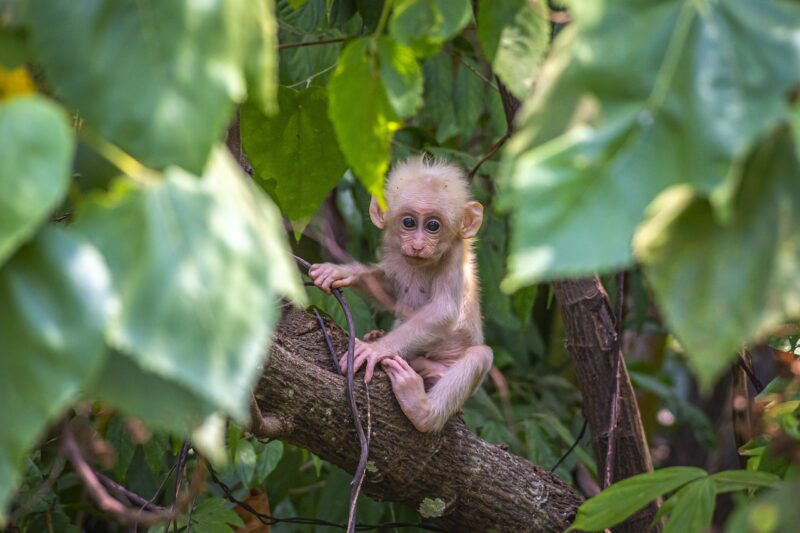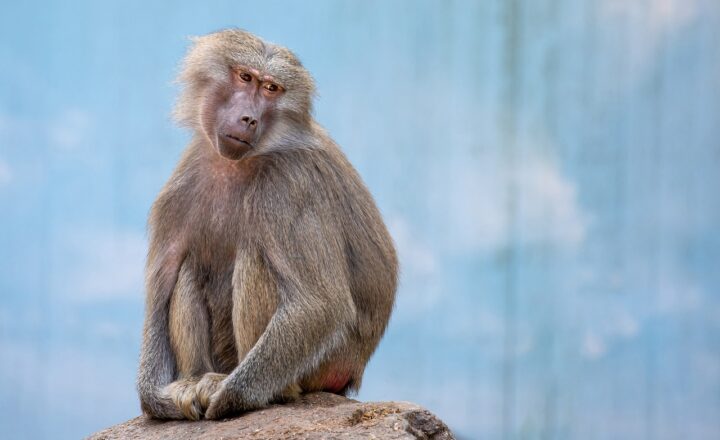Exploring the Social Lives of Monkeys in the Wild
November 15, 2024

Monkeys are some of the most fascinating creatures on our planet, known not only for their intelligence but also for their complex social structures. From their playful antics to the intricate dynamics of their communities, the social lives of monkeys offer a captivating glimpse into the behaviors and interactions that define their existence in the wild.
1. Understanding Monkey Social Structures
Monkeys exhibit a wide range of social structures, which can vary significantly between species. These structures can range from small family units to larger troops made up of dozens of individuals. The complexity of their social interactions is shaped by various factors, including environmental conditions, food availability, and evolutionary pressures.
For instance, some species of monkeys, such as the common macaque, live in matrilineal societies where females remain with their natal groups, while males disperse upon reaching maturity. This structure often leads to females forming strong bonds with their kin, which can enhance cooperative behaviors and support systems within the troop.
2. Communication: The Heart of Monkey Social Life
Communication plays a crucial role in the social lives of monkeys. They employ a variety of vocalizations, body language, and facial expressions to convey messages ranging from warnings of predators to invitations to groom. Grooming is an essential part of monkey social life, serving as a means to establish and reinforce social bonds.
- Vocalizations: Monkeys use a range of calls to communicate danger and maintain contact with troop members. These vocalizations are not only critical for keeping the group cohesive but also play a role in identifying relationships within the group.
- Body Language: Postures, gestures, and physical proximity can all convey messages. For example, an aggressive posture or bared teeth may signal a threat, while relaxed body language indicates comfort and friendship.
- Grooming: This behavior helps reinforce social ties and demonstrates trust among individuals. Grooming sessions are often communal and can alleviate tension, contributing to social harmony within the troop.
3. Hierarchies and Dominance: The Power Dynamics in Monkey Troops
Social hierarchies are prevalent in monkey troops, often established through competition and grooming. The dominant individuals in a troop often have preferential access to resources such as food and mates. Understanding these hierarchies is essential for comprehending the social dynamics within a group.
For example, in species like the olive baboon, males often engage in displays of aggression to assert dominance, while females may form coalitions to support one another against dominant males. The intricate balance of power is vital for the survival and reproductive success of individuals within the troop.
4. Play and Social Learning
Play is an integral aspect of monkey social life, particularly among younger individuals. It serves numerous functions, including the development of social skills and the practice of behaviors necessary for adult life. Young monkeys engage in play fighting, chasing, and other playful interactions, which help them learn about social hierarchies and conflict resolution.
Observations of play in monkeys show that it is not just trivial but a critical component of social learning. Young monkeys learn from their peers and adults through play, which can significantly influence their social competence and adaptability.
5. The Role of Environment in Social Dynamics
Environmental factors heavily influence the social lives of monkeys. Habitat type, availability of food resources, and presence of predators all shape social interactions. In regions where food is abundant, monkeys may form larger social groups. Conversely, in environments with scarce resources, smaller troop sizes may be more advantageous.
Additionally, seasonal changes can impact social structures as food can become less accessible, leading to increased competition and shifts in troop dynamics. Researchers are continuously studying how global changes, including deforestation and climate change, affect monkey societies and interactions.
6. Conservation and Social Dynamics
Understanding the social lives of monkeys is crucial for conservation efforts. Many monkey species are facing threats from habitat destruction, hunting, and the illegal pet trade. Disruption of their social structures can have significant consequences on survival, breeding, and community stability.
Efforts to conserve monkeys go beyond protecting their habitat; they must also consider maintaining the complex social interactions that define their lives. Conservation programs that focus on maintaining social structures and providing for the needs of troop dynamics will be more effective in ensuring the survival of these fascinating animals.
Conclusion: A Glimpse into the Lives of Our Primate Relatives
The social lives of monkeys in the wild offer profound insights into the behaviors that unite them as social creatures. From their complex communication systems to intricate social hierarchies, understanding these dynamics not only enriches our knowledge of primates but also underscores the importance of protecting their habitats and societies.
As we continue to explore monkey societies, we are reminded of the remarkable connections that exist in the animal kingdom, compelling us to see their significance in the grand tapestry of life on Earth. By studying these social structures, we can better appreciate the intelligent behaviors of monkeys, ultimately fostering a desire to conserve and protect them for future generations.







